Following Her Muse
Ruth Appelhof '65, G'74, G'80, G'89 to publish book about modern art provocateur Lee Krasner
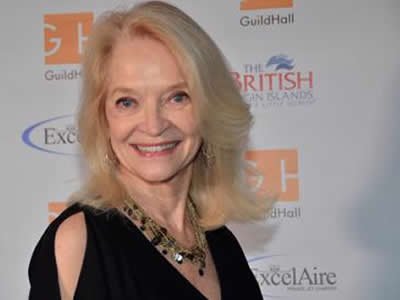
It was inevitable that when Ruth Appelhof retired from Guild Hall in 2016, she would write a book—not about herself, although her auspicious role in the global art community would make for fascinating reading, but her friendship with the legendary artist Lee Krasner.
“In 1974, I promised myself to write a book about Lee one day, and I’m glad I’m finally doing it,” says the Syracuse University alumna, speaking by phone from her home on Long Island’s East End. “I’ve already interviewed more than 40 people, many of whom I have become friends with and are at the top of the heap in the art world. It’s like Lee has opened a whole new world for me, from beyond the grave.”
Appelhof was a student in the College of Arts and Sciences (A&S) in 1974, when she interviewed Krasner for her master’s thesis. Fresh from a solo show at New York’s Whitney Museum of American Art, Krasner was finally coming to terms with the shattering death of her husband, Jackson Pollock, 18 years earlier. Within a decade, she also would be gone.
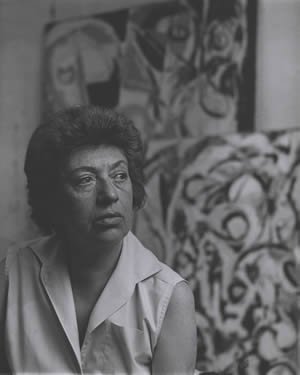
“Previously, critics didn’t attend much to women artists, so I think Lee appreciated how committed I was to her,” recalls Appelhof, who earned four degrees from Syracuse. “After chatting with her a few times, Lee invited me to spend the summer with her in East Hampton, where she painted in the barn of Jackson Pollock’s old studio. I packed my bags—all my books and my huge typewriter—and drove my bright-orange Ford Pinto into New York City to pick her up.”
Krasner had no sooner buckled herself into the ride than it became apparent she did not know the way to East Hampton, nor how to operate a vehicle. “Lee may have been shocked by my little car, but she said nothing,” Appelhof continues. “I soon learned that she wasn’t so interested in my thesis project—she needed a chauffeur.”
Appelhof took up residence in the tiny, upstairs bedroom of what is now the Pollock-Krasner House and Study Center, operated by Stony Brook University. Appelhof recalls Krasner being “very, very attentive,” agreeing to be interviewed almost every afternoon. “I’d type up everything at night and then bring it downstairs the next morning for her to review. She’d take out a big Magic Marker and cross it all out,” Appelhof says. “Then we’d commence with the next round of questions.”
The result was many hours of taped interviews, providing a rare glimpse into the life of a tough, ambitious artist. Appelhof subsequently donated the recordings to Syracuse’s Special Collections Research Center.
The recordings also are at the heart of Appelhof’s book, whose 2019 release will coincide with a major European touring retrospective. (Appelhof is fielding inquiries from publishers.) The purpose of the book is “to bring Lee Krasner to life,” drawing on Appelhof’s personal encounters and those of other people who knew or worked with the artist. Some of them still live in the Hamptons, where Krasner’s genius has assumed mythic proportions. “There are so many people I know from my 17 years at Guild Hall who have these funny and sometimes sad stories about Lee Krasner,” says Appelhof, who became the center’s executive director in 1999, following leadership stints at the Hill-Stead Museum in Farmington, Connecticut, and the Minnesota Museum of American Art in Minneapolis. “I see this book as a memoir—not just my own, but also Lee Krasner’s and those of the global arts community.”
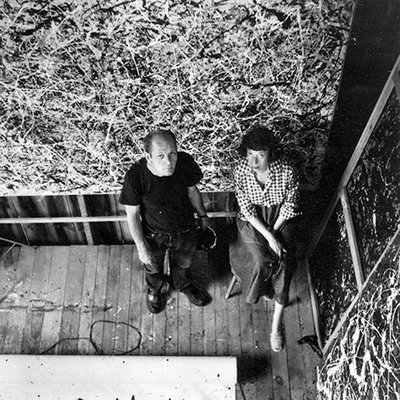
Much ink has been devoted to the life of Krasner, as a solo artist and a committed guardian of her husband’s legacy. Following classical studies at Cooper Union and the National Academy of Design, the Brooklyn native trained under Hans Hofmann, who instilled in her the rudiments of Cubism and the importance of artistic integrity. “The most valid thing that came to me from Hofmann was his enthusiasm for painting and his seriousness and commitment to it,” Krasner told art historian and critic Barbara Rose. Indeed, Hofmann was a formidable presence whose novel approaches to form, texture, color and space helped set the stage for Abstract Expressionism.
Reflecting the sexist cultural milieu of the 1930s, Hofmann once said that Krasner’s artwork was “so good you would not know it was by a woman.”
Krasner was exhibiting with other avant-garde artists in the early ’40s, when she met Pollock, a former Regionalist whose symbolic, pictographic imagery impressed her for its originality. In 1945, Pollock and Krasner married and moved to the Springs, a quiet hamlet in East Hampton. There, they maintained separate studios, but encouraged one another. Visits were by appointment only.
In those days, Krasner was the more established artist. Steeped in the international modern idiom, she was a proficient draughtsman whose mastery of line and color begged comparisons to Picasso and Matisse. Little did Krasner know that when she introduced Pollock to Greenwich Village’s burgeoning avant-garde scene, she irrevocably altered the course of modern art.
Pollock went on to produce an arresting body of work, including paintings made during his famous “drip period” from 1947-50. While Krasner never stopped painting, she dutifully promoted and protected her husband’s career, often at the expense of her own.
“When they first met, Jackson was an outsider, a loner. Lee insisted he meet the people in her inner circle, such as Hans Hofmann and Clement Greenberg [a pre-eminent art critic who graduated from Syracuse in 1930],” Appelhof says. “I find it fascinating that Jackson walked through every door that Lee Krasner opened for him. She did it intentionally. I believe that, without her, there would have been no Jackson Pollock.”
Ultimately, fame was Pollock’s undoing. Plagued by mounting insecurities, he began questioning his work, as well as that of his peers. Moreover, his habitual drinking and erratic behavior strained his marriage. Needing space, Krasner took off to Europe during the summer of 1956. Several weeks passed before she got a call telling her that Pollock and a female passenger had just died in a high-speed, alcohol-fueled car crash. The other passenger—a girlfriend named Ruth Kligman, whom Pollock had met at the Cedar Tavern, Greenwich Village’s notorious artist hangout—miraculously survived. A beleaguered Krasner returned to the United States, and sought refuge in her work.
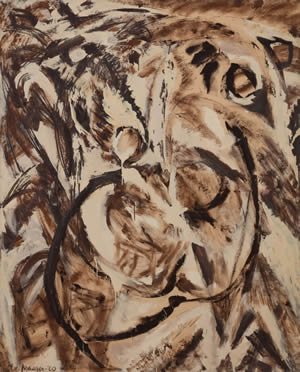
Holed up in her late husband’s studio, Krasner embarked on the “Earth Green” series, fusing nature-inspired forms with a rhythmic, splattered technique. Following it were two-dozen monumental compositions called “The Umber Paintings.” This iconic collection, which figures prominently in Appelhof’s book, is on display through January 13, 2018, at New York’s Paul Kasmin Gallery, directed by Eric Gleason ’05.
“We wanted to focus on a body of paintings that was exemplary of just how formidable and versatile a painter Lee Krasner was,” says Gleason, adding that “The Umber Paintings” is the gallery’s first major solo exhibition of Krasner, since it began representing the artist's works via the Pollock-Krasner Foundation. (Following Krasner’s wishes, the foundation was established in 1985 to support individual working artists of “established ability.”) “You can see an evolution from tortured, almost violent, mark-making to more confident, lyrical, balanced compositions. This was one of the most pivotal times in Krasner’s life, emotionally and as a painter.”
The sudden and tragic loss of Pollock, followed by the passing of Krasner’s mother, signaled a more aggressive style. Suffering from chronic and severe insomnia, Krasner worked on “The Umber Paintings” at night under artificial light, shifting her palette from bright, vibrant hues to dull, monochromatic ones. (“Umber” refers to the reddish-brown pigment she used in conjunction with whites and creams.) “I realized that if I was going to work at night, I would have to knock out color altogether, because I wouldn't deal with color except in daylight,” Krasner remarked at the time. The drips and drabs of paint were reminiscent of Pollock, and contributed toward the dynamic, rhythmic feel of Krasner’s life-sized brush strokes, which became her calling card.
Helen Harrison, the Eugene V. and Clare E. Thaw Director of the Pollock-Krasner House and Study Center, says “The Umber Paintings” represent a “key, but lesser-known period” of the artist’s hard-won career. “It emphasizes Krasner’s coming to terms with personal and psychological issues—her anger and guilt surrounding Pollock’s death and the grief following her mother’s death—that came out in these transitional works. This shows the crucial role of subjectivity and spontaneity in Abstract Expressionist painting,” says Harrison, also a seasoned art historian and arts journalist.
Despite bouts of ill health (including an aneurysm and a broken wrist in the 1960s), Krasner worked up until a year before her death in 1984. Her combative forms and colliding colors persisted throughout the 1960s and ’70s, as she interrogated the complexities of nature, the mind and the body. Some argue that, in her quest to remain authentic, she became a postmodernist. “Krasner resisted categorization, which, she felt, was … limitation,” Harrison says. “’Female artist’ and ‘American artist’ were labels she rejected. She wanted to be judged as an artist, pure and simple—a singular expression of a singular artistic sensibility.”
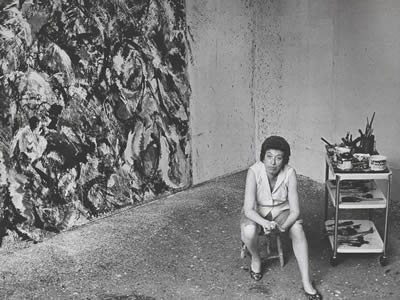
Krasner often was her own worst critic. “She knew she wasn’t as great a painter as Jackson Pollock, but that she had something important to contribute,” says Appelhof, adding that Krasner routinely tore up her less-inspired work, using the scraps and pieces as collages—a nod to the cut-paper medium of Matisse.
Adds Gleason: “With or without Pollock in her life, Lee Krasner was an exceptionally harsh editor of her own work. … The world is left with only a couple hundred paintings total, and that has adversely affected her legacy as much as anything.”
Krasner spent her final years in relative seclusion. She felt that her first full retrospective, which opened at the Museum of Fine Arts, Houston, in 1983, had occurred “too late” in her career. By the time it arrived at the Modern Museum of Art (MoMA), Krasner was dead. Appelhof considers it ironic that, despite Krasner’s lack of interest in second-wave feminism (something many artists championed at the time), she was one of the first women to have a MoMA retrospective.
Krasner left behind a complicated legacy—something Appelhof is addressing in her book. That Krasner frequently revised her style and technique has made it difficult to lump her into a single group of artists. Being the wife of a celebrity artist also has added to the confusion. “I happened to be Mrs. Jackson Pollock, and that’s a mouthful,” Krasner famously said. “I was a woman, Jewish, a widow, a damn good painter, thank you, and a little too independent.”
Scholars agree that Pollock, Picasso, Matisse and Piet Mondrian were Krasner’s chief influences, and that she, in turn, inspired male and female artists alike. Among her beneficiaries was Miriam Schapiro, who, in the 1970s, spearheaded “femmage,” a type of feminist art anchored in collage and Cubism.
Christina Strassfield, Guild Hall’s museum director and chief curator, is glad Krasner is getting her due. “I believe she did so much to advance Pollock’s reputation and career,” says Strassfield, who curated the Guild Hall show “Lee Krasner: The Nature of the Body” in 1995. “She was an extremely talented artist who had the burden of being Pollock’s widow and not being taken as seriously as she deserved.”
Strassfield thinks Appelhof’s book will confirm what insiders have known for decades—that Krasner was a powerful, dramatic force in her own right. “Once I was immersed in the research for [‘The Nature of the Body’], I truly felt that she had been overlooked for too long because of the attention Pollock received. It is sad that major female artists from that generation just have not been given proper respect,” she adds.
Even Krasner’s former teacher, who did not live long enough to witness her celebrity, was keenly aware of her impact. “Thanks to Lee Krasner, hundreds, if not thousands, of women have found serious, meaningful careers in the visual arts,” Hofmann said before his death in 1966. “It was her courage and determination that laid the groundwork for so many today.”
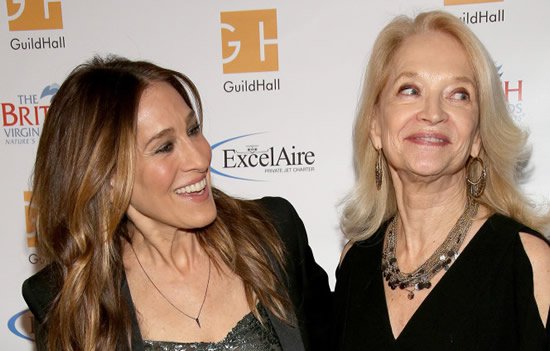
Those qualities inspired Appelhof, then a single mother of two, to pursue graduate degrees at Syracuse. Her twin interests in painting and art history led to a yearlong fellowship at the Whitney, followed by a three-year stint as curator of the University’s Lowe Gallery. In time, Appelhof acquired a reputation as a turnaround specialist, using contemporary art to transform small, regional institutions into cultural and educational destinations. Guild Hall was her masterpiece. Appelhof oversaw a major renovation of the venerable institution, and led it to new levels of excellence. Today, it is the cultural and educational jewel of the Hamptons, catering to A-list stars, creative tastemakers and next-generation talent.
“What is remarkable about Ruth is her versatility and universal appeal to all of the myriad segments of this very particular industry,” says Gleason, who gets face-time with her once a month. “She is equally adept at working with—and is equally praised by—artists, critics, curators, dealers and institutional directors. There are precious few people in the art world about whom you can say that.”
That Appelhof has devoted much of her career to advancing postwar female artists—Krasner, in particular—makes her qualified to tackle such an ambitious book project. “Obviously, Ruth knew Lee Krasner well, and worked with her at both her Manhattan and East Hampton studios. I think she is uniquely suited to address ‘Lee Krasner, the human’ and ‘Lee Krasner, the artist’ in deft, astute ways,” he adds.
Harrison agrees, saying Appelhof can amplify what we know about Krasner, while offering fresh perspectives on her life and work. “Tastes change, fashions come and go, reputations wax and wane, so one must expect fluctuations,” Harrison says. “As long as Krasner’s work continues to speak to a receptive audience across generations and cultures, in the long run, it will endure.”
Leave it to Krasner’s acolyte-turned-biographer to have the last word. “In many ways, she was a muse for not only Jackson Pollock, but also generations of artists,” Appelhof says wistfully. “Including me.”
